Welcome to the Coral Reef of the Florida Keys
This page by Jerry Wilkinson
Page 1
The undersea world of the Florida
Keys coral reef is as vast as the above terrestrial world. This page is
simply a sample page hoping to attract assistance in displaying this fascinating
submerged world; therefore it is an eclectic assortment. Hopefully, we
will soon begin with its flora, fauna and cultural objects.
Remember many facets effect
the colors of underwater photography. For this reason gathering reasonably
good images will be difficult and help is needed.

See if you can locate the spotted scorpion fish
camouflaged in the above image.
To verify your selection, click HERE.
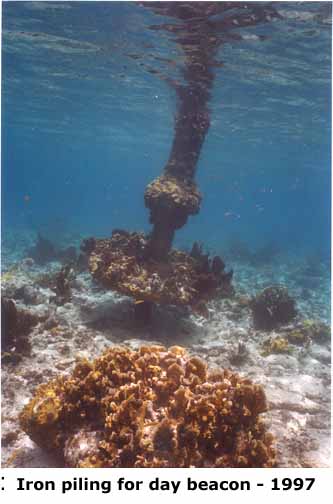
Not every thing at the reef is of natural history.
Above is shown the support piling for a 1800's day marker beacon. This
one is submerged at French Reef.
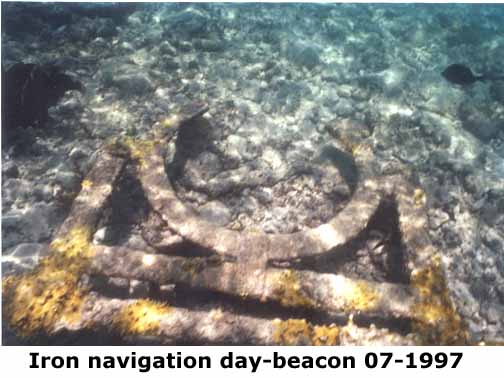
Above is the visible beacon part that was above
water. Also at French Reef.
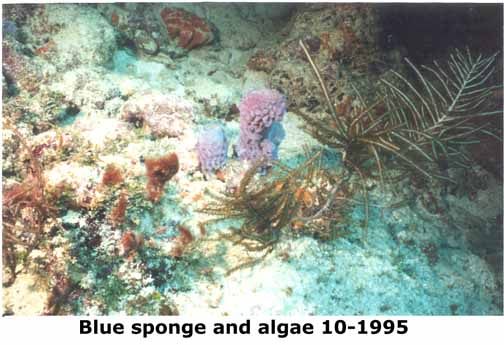 The waters surrounding the reef abound with beauty.
An example of what is normally the fascinating "water purification" common
sponge, above is the fluorescent blue sponge.
The waters surrounding the reef abound with beauty.
An example of what is normally the fascinating "water purification" common
sponge, above is the fluorescent blue sponge.
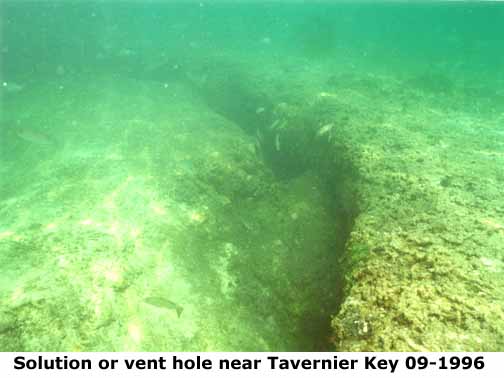 Generally the floor is laden with growth. Sometimes
it is not as at this location off of Tavernier Key where a fresh water
vent allows fresh water to enter. The volume of fresh water varies with
many factors, one being the rainy season.
Generally the floor is laden with growth. Sometimes
it is not as at this location off of Tavernier Key where a fresh water
vent allows fresh water to enter. The volume of fresh water varies with
many factors, one being the rainy season.
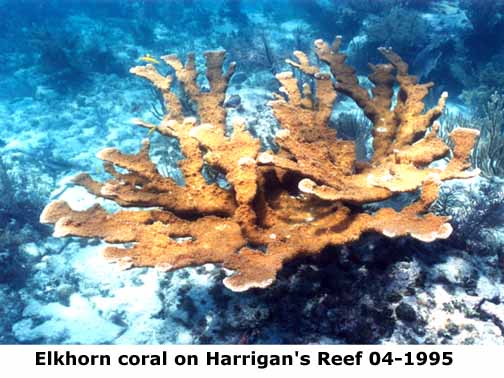 Above is one of the reef builder corals. When
we visit the Florida Keys, one should remember that it was just a few thousand
years ago that the island were live coral forests. Therefore the true native
Keys animals were the corals, etc.
Above is one of the reef builder corals. When
we visit the Florida Keys, one should remember that it was just a few thousand
years ago that the island were live coral forests. Therefore the true native
Keys animals were the corals, etc.

Another reef builder was the pillar corals,
of which a very small one is shown above.

Viewing another submerges cultural resource
that in time is covered with natural resources. Both resources are now
protected by the Florida Keys Natural Marine Sanctuary.
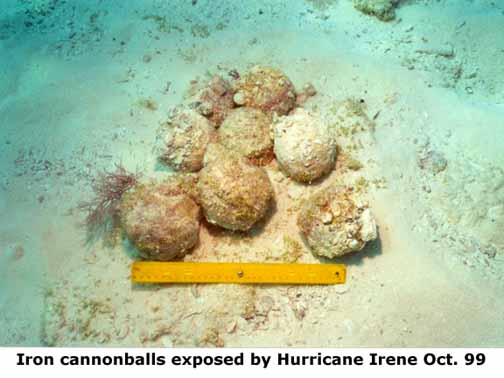
All the resources are effect by other forces.
The pile of rusted cannonballs were uncovered by Hurricane Irene.
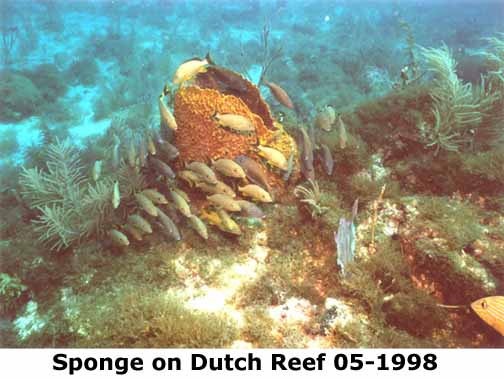 The sponge is a common sight on the ocean floor. Note
the live around the area.
The sponge is a common sight on the ocean floor. Note
the live around the area.
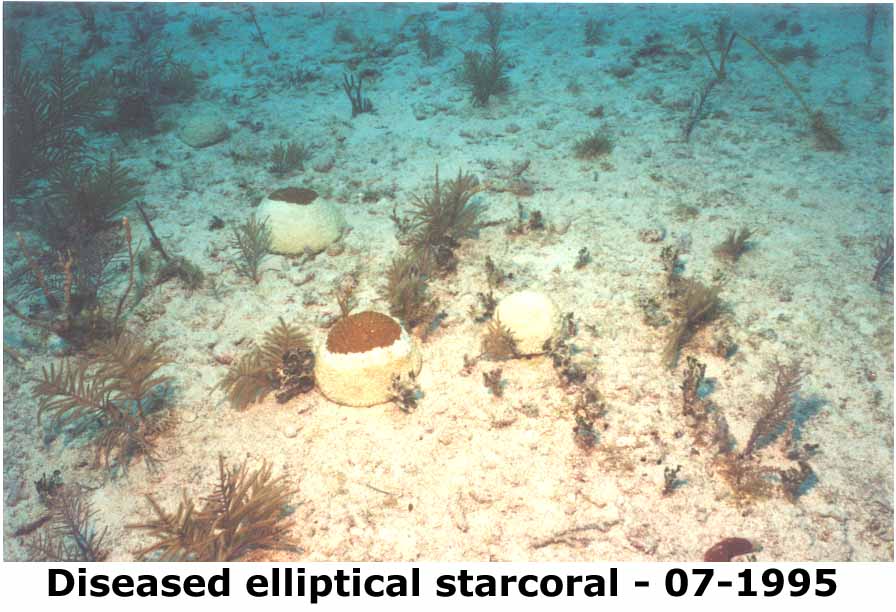
As in the world, there is healthy and diseased
organisms. Above is a diseased elliptical star coral and from the appearance
almost everything surrounding it is not well.
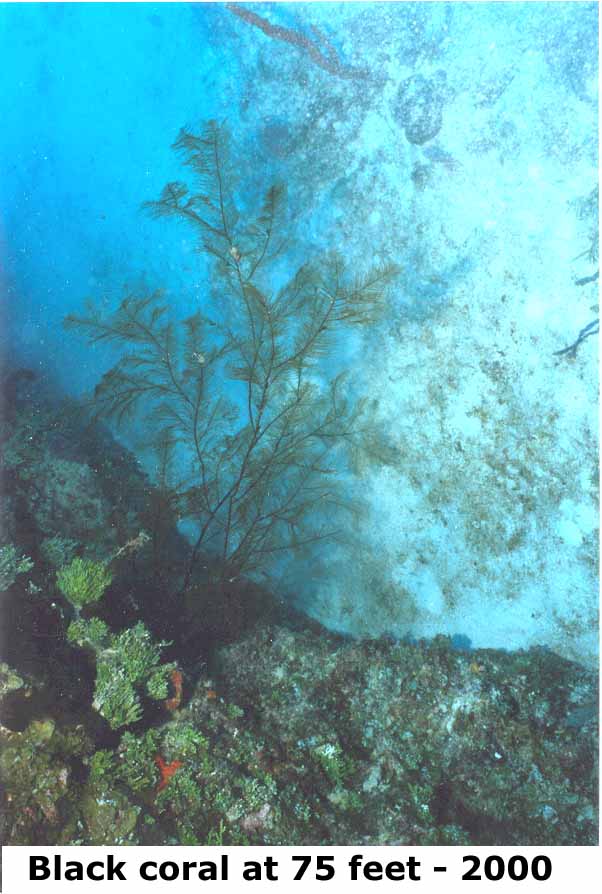
Another of the corals and this case a healthy
one, is the black coral. It is the plant-looking growth that is flexible
in the currents. Not all corals are the rigid hard corals.

Concluding with man out of his element researching
on the permitted wreck of the Capitana which sank in 1733.
The above is just a sample. There is more of the reef
to see.
- To view a few selected tropical reef fish click
HERE.
- To take a visual tour of selected submerged cultural
resources click HERE
- To take a visual tour to the reef lighthouses click
HERE.
** The above photos were provided by Historical Preservation Society
trustee and National Marine Sanctuary volunteer Denis Trelewicz.
Return to Natural History Room
|











